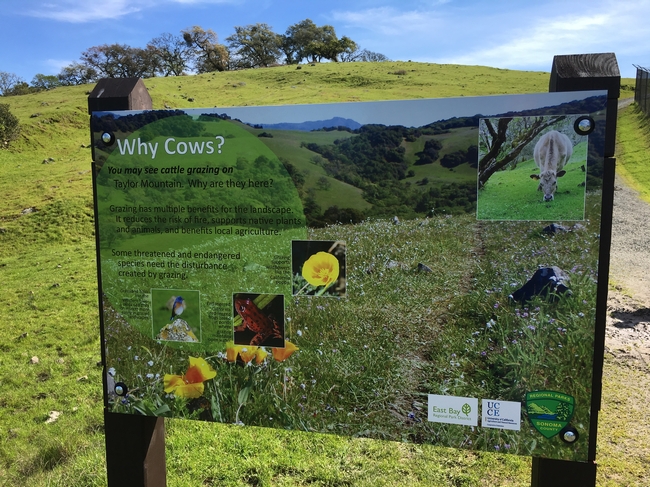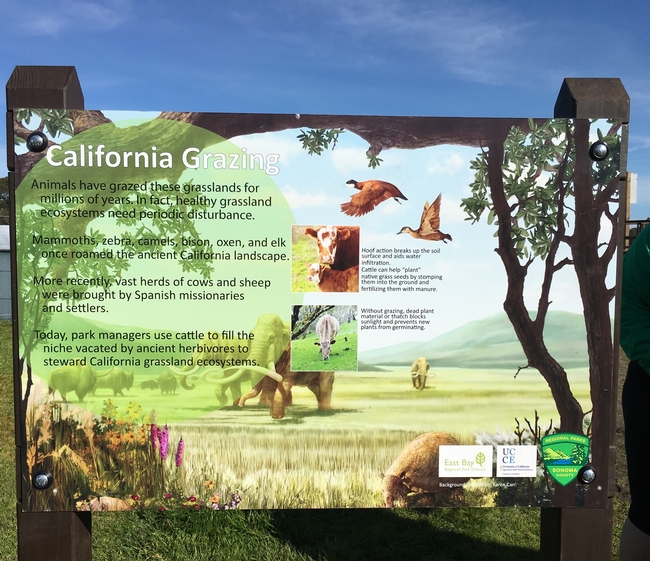The University of California Cooperative Extension recognized rangelands and their importance in Sonoma County, creating the “Ecosystem Services Interpretative Signage” to increase awareness and knowledge of park visitors, mangers and decisions makers of working rangelands and the ecosystem services. Rangelands are also referred to as working landscapes, are locally managed and provide essential biological, scenic, economic, and recreational values locally and throughout the world. Working landscapes are threatened in many areas by development, conversion to 
Beyond the obvious benefits of beef cattle grazing such as food production, grazing can benefit individual plant and animal species, can help manage fire hazards, and, in the absence of natural disturbance regimes, help maintain Sonoma County's landscape structure. Beef cattle not only provide beef as food, they are also used as grazing tools, keeping weed or shrub invasion at bay, enhancing wildflower displays, or maintaining a low grassland canopy height to allow visibility, foraging, and movement of small mammals such as voles and ground squirrels. Rangelands not grazed or otherwise managed, especially where they abut or intergrade with shrublands, will become shrub invaded, which converts grasslands to coastal scrub. As well as increasing fire hazards, this conversion results in loss of coastal grasslands and; thus, loss of the species that occupy them. Fire and livestock grazing are the two main tools we can use to maintain grassland ecosystems. In Sonoma County, fire has become more difficult to use, livestock grazing is the most common and practical option. Maintaining rangelands has several benefits associated with water, including increasing water infiltration and increasing vernal pool inundation period for fairy shrimp and the California tiger salamander. In addition to ecosystems services associated with water, livestock grazing can also improve habitat for native annual forbs & grassland birds, control invasive weeds, reduce fire hazard, etc.
